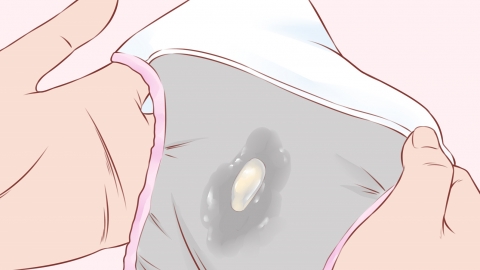Why is my vaginal discharge as thick as paste?
Normally, leukorrhea resembling paste may be caused by factors such as the post-ovulatory phase, sexual arousal, vulvovaginal candidiasis, vaginitis, cervicitis, etc. If discomfort occurs, timely medical consultation is recommended. Detailed explanations are as follows:

1. Post-Ovulatory Phase
During ovulation, estrogen levels in women's bodies are relatively high, and the leukorrhea is usually transparent, stretchy, and abundant. After ovulation, progesterone levels gradually increase while estrogen levels relatively decrease. Under the influence of progesterone, leukorrhea becomes thick and paste-like. Usually, no special treatment is required; maintaining vulvar hygiene, washing daily with warm water, changing underwear frequently, and keeping the vulva dry are sufficient.
2. Sexual Arousal
When a woman is sexually aroused, the vestibular glands secrete some fluid, which may alter the characteristics of leukorrhea when mixed, making it thick and paste-like. It is important to maintain regular and healthy sexual activity, avoid excessive sexual stimulation, and maintain hygiene before and after intercourse, with both partners washing their external genitalia.
3. Vulvovaginal Candidiasis
Vulvovaginal candidiasis is caused by Candida infection. When the vaginal environment changes, such as increased glycogen or elevated acidity, Candida invades the vaginal mucosa, causing an inflammatory reaction. This may lead to increased leukorrhea, which becomes paste-like, often accompanied by symptoms such as vulvar itching and leukorrhea with an odor. Patients can use medications such as Nifuratel-clotrimazole vaginal cream, clotrimazole tablets, or miconazole nitrate suppositories under a doctor's guidance.
4. Vaginitis
Vaginitis may be caused by Candida albicans infection. When this fungus multiplies extensively in the vagina, it disrupts the balance of the normal vaginal flora, potentially causing congestion and edema of the vaginal mucosa, increased leukorrhea secretion with altered characteristics, appearing as thick white curd-like or tofu dreg-like substance, similar to paste. Patients may also experience symptoms such as vulvar itching and burning pain. Treatment options include using medications such as clotrimazole suppositories, miconazole nitrate suppositories, or nystatin tablets under medical guidance.
5. Cervicitis
Cervicitis is mostly caused by pathogens such as Chlamydia trachomatis and Neisseria gonorrhoeae infecting the cervix. Inflammation stimulates the cervical mucosa and surrounding tissues, possibly leading to cervical congestion and edema, hyperactive cervical gland secretion, increased leukorrhea, which may appear as milky white mucus or pale yellow purulent discharge, sometimes resembling paste with a viscous texture. It may also be accompanied by symptoms such as lumbosacral pain and lower abdominal heaviness. Patients can follow medical advice to use medications such as azithromycin dispersible tablets, doxycycline hydrochloride tablets, or cefixime capsules for treatment.
In daily life, it is important to engage in regular exercise, strengthen physical health, and improve immune function to effectively prevent pathogen infections. Additionally, regular gynecological examinations, including routine leukorrhea tests, should be conducted to detect and manage potential gynecological diseases at an early stage.





